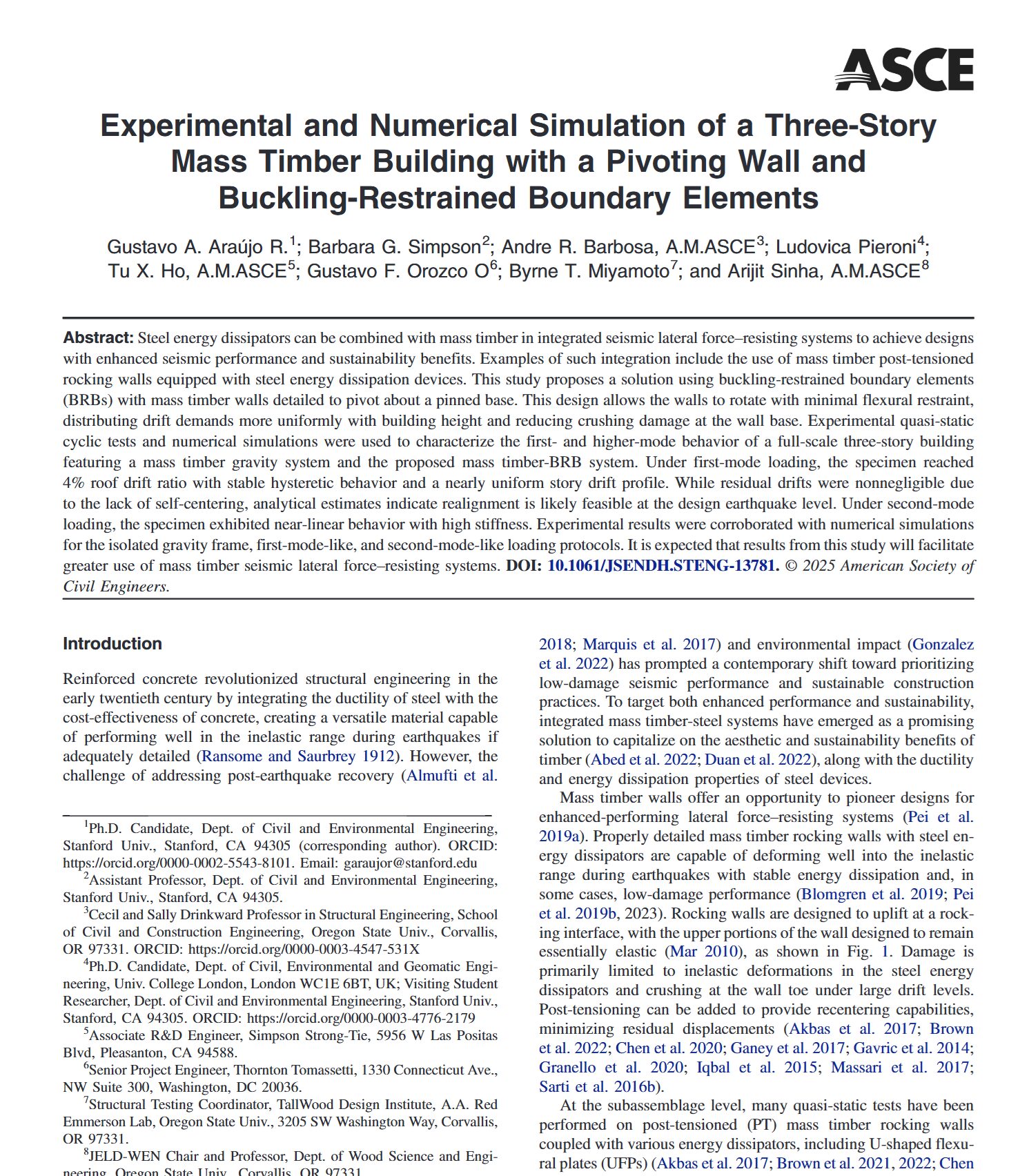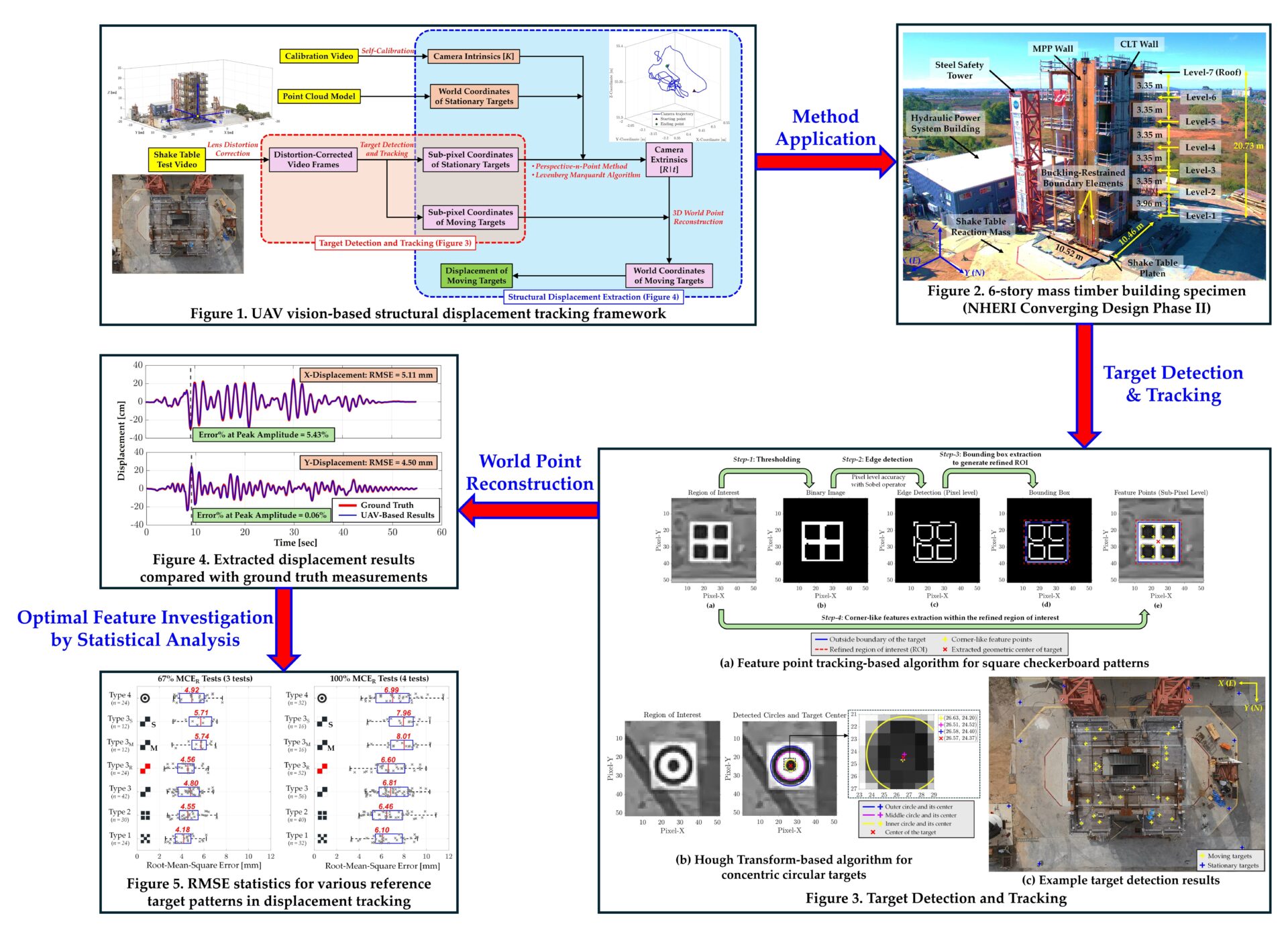
It was a pleasure to work on this research and paper with Gustavo Araujo, Barb Simpson, Ludovica Pieroni, Tu Ho, Gustavo (Fernando) Orozco, Byrne Miyamoto, and Arijit Sinha.
Special thanks to the graduate students Tanner Field, Steven Kontra, Patricio Uarac, and Kristian Walker from Oregon State University for their help with instrumentation and testing.
The support provided by the TallWood Design Institute, particularly Phil Mann, the laboratory technical manager, and Mark Gerig, the laboratory technician, was also essential throughout the experimental program.
Acknowledgment is extended to Brandt Saxey and Zac Vilmar from CoreBrace for their help in designing the BRBs and testing the specimen.
Similarly, gratitude is also extended to Reid Zimmerman from KPFF, Eric McDonnell from Holmes, and Steve Pryor from Simpson Strong-Tie for their valuable feedback on the design of the lateral and gravity systems.
I would particularly like to acknowledge Steve Pryor’s suggestion to test the isolated gravity frame.
This project was executed under the USDA Agricultural Research Service Award No. 58-0204-9-165.
Part of the work was also supported by the National Science Foundation under Awards 2120683, 2120692, and 2120684.
We are grateful for the generous support and donations provided by our industry partners, including KPFF, Holmes, Fortis Construction, Carpenters Union, CoreBrace, Boise Cascade, Simpson Strong-Tie, and Freres Engineered Wood.




